Grease Cap, 1.99" OD EZ Lube Drive in with Plug - Qty 2

Thank you! Your comment has been submitted successfully. You should be able to view your question/comment here within a few days.
Error submitting comment. Please try again momentarily.
- All Info
- Reviews (849)
- Q & A (0)
- Videos (3)
- Photos
TruRyde Trailer Bearings Races Seals Caps - RG04-040
- Caps
- E-Z Lube Grease Cap
- TruRyde
Grease cap fits EZ lube trailer hubs with 2" inner diameter. Includes rubber lube plug for EZ Lube axles.
Features:
- Grease cap with rubber lube plug for trailer hubs
- Drive-in installation
Specs:
- Outer diameter: 1.99"
- Quantity: 2
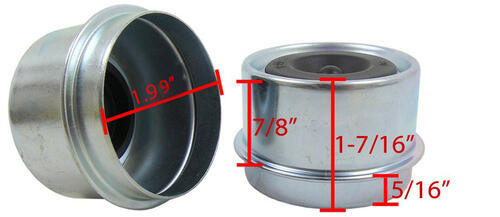
DC-200L Grease Cap, 1.99" OD EZ Lube Drive-In - Qty 2
DC-RP Rubber Plug for EZ Lube Grease Cap - Qty 2
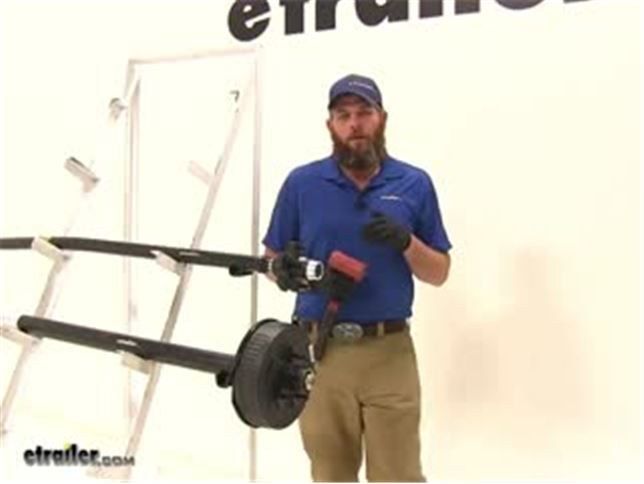

Videos are provided as a guide only. Refer to manufacturer installation instructions and specs for complete information.
Video Transcript for Trailer Bearings Races Seals and Caps Rebuild
Speaker 1: Today we're going to take you through the rebuild process on a couple of hubs. We've got an idler hub, and here we've got a hub and drum assembly. Works with electric rigs, but this can also work for just standard discs, if you've got a disc brake style setup.Basically what we're going to show you is how to get all of the bearings out. How to remove the seal. How to remove the race's if they're damaged, then get them replaced in the proper manner. We'll show you how to use an easy loop hub, which we have here.The first thing we are going to need to do is, get the grease cap off the end.
It can have either a rubber plug in it like this one does, or it can be a solid metal cap.These are pressed fit in there, basically by tapping on them on the back side. To remove them, a deadbolt hammer is typically what we're going to use. We're just going to start tapping as we go around. You'll see a little separation start right here, and slowly it'll work it's way off.Now the next step's going to vary a little bit depending on your axle setup. Do you see this is going to have a keeper that goes around the nut.
And that prevents that from being backed off, or removed. A lot of times you'll have a castle nut, which will have just little tabs that stick off, and there will be a cotter pin that passes through it. Just depending on your application, you need to get the keeper for the nut off. This style we just kind of pry out. A cotter pin you would just remove of course.Once we have that off ...
We'll start to take off the nut here, and the washer that's in behind it. Now yours should look a whole lot more dirty than this. There should be a lot of grease packed in, and through the hub, this one's brand new. We thought it'd be nice to show you the components before the grease was on .. Of our washer that comes off.And then here we're going to have our outer bearing.
Continue to pull that. We're gonig to have our inner bearing here. That sits in the backside of the hub. And we didn't put it in yet, we will show you how to put it in. But a seal would typically be covering the backside here. We'll show you how to use a seal removal tool, or another tool. To get that pried up and out. To get an access to that inner bearing.Now for a drum style like this, that process for disassembly is going to be just the same. One thing to keep in mind if you're using a disc brake setup. You'll have to remove the caliper before the disc is going to come off.Now once we have the spindle exposed, as we said this is going to be really greasy. We want to get all the grease removed, and the first thing we'll do is inspect it. We want to make sure that it looks just like what we have here. Everything's nice and smooth. We don't see any kind of discoloration, or any marring on the metal. Indicating that our bearing's got hot.If you do have any of those symptoms, at this point it's time to replace those bearings. You don't want to repack them. Get new bearings, and put in there. You might have a bearing that's come apart in here. Another surface to ensure is in good condition, is where your seal is going to go. That helps seal all the grease inside of our hub. With a damaged or broken seal, that grease is going to seep out. Either out of the hub, or in this case into our brake assembly.Now if your axle has brakes, we're also going to check the disc. Make sure it doesn't have any issues, or your hub. And this is going to be a hub and drum assembly. The brakes are going to ride on this machine surface. You're going to check that for signs of excessive heat, discoloration, or cracking. And this is our magnet surface. We'll check that surface for the same issues.Now inside the hub regardless if it's a disc brake, it's a drum brake like this. Or just a standard idler style hub. You're going to have an outer race. Would be right here, it's a small tapered piece of metal your bearing sits in, and rotates on. That's basically the outer portion of the bearing.You have the same thing here on the backside. This is called the inner race. Now if those show any signs of wear, overheating, or cracking. Those are also something we'll need to replace, which we'll show you how to do in just a minute.Now, with your brake assembly exposed, if you do have electric brakes like we have here. It's a good idea to check all the components for wear, cracking, maybe missing pieces. Check your pad thickness to make sure those are in good shape. Basically if you have a non working brake assembly and you put everything back together, you're just going to have to take it apart and do it all over again to get back to the brake assembly. This gives you a really good option to be able to change them out.And most applications are going to use a four, or maybe a five bolt flange to hold them in place. And you'll just remove the lock nuts, or sometimes you'll have a hex nut with a lock washer. You want to remove those, and then simply slide your assembly off after you cut the wiring.The friction material itself should also be checked for any kinds of cracking, or overheating. If you have any grease inside the system at all, it's likely it's gotten on those pads. It's a good idea to get those changed. Now as far as the removal of the races go, it's going to be just the same whether we're using an idler style hub like we have here. A drum brake like we have here. You can basically see where the idler is, here in the middle of the hub. It's going to go all the way around there, and we just have this extra material here to provide our braking surface.Now if you're doing a disc brake style job again, it's going to be just the same here with the races living inside of the actual hub portion. You'll just have the discs there for the brakes to make contact. We're going to use this little bit smaller one, it's a little bit easier to manage to show you how to get these out. We've talked about where the races are. The outer here, the inner being closer to the inside, but on the backside of the race there's a little lip. That lip's meant to stick out just a little bit further than the hub, and provide us an area to put our tool on, and help to drive that out.If you look all the way through there on that inner race, you'll see that little lip that sticks out just from the hub slightly, and it gives us enough area to use our tool on. Now generally to remove these you're going to use a punch, similar to this. Some guys will use a screwdriver. Or a piece of pipe. If you have a piece of pipe that's small enough to fit inside of that diameter, you can take that down through and allow it to rest on that lip.Use our punch, and then just need a hammer. And we'll start working that out. We're going to tap all the way around. Kind of equally, and evenly apply the force to get it to come on out of the bottom for us.You can see now as it starts to come out there's going to be a little gap created between the hub and the race. And we can just keep going, bringing it on out. Then you can inspect the inside of the hub surface there. Make sure no damage or anything has occurred, and repeat that same process for the outer race if you plan on removing and replacing that one.Now in the outer flat edge, you can see we're going to have our tapered edge on this side. If we roll our race over to the flat side, typically there's going to be a manufacturers part number on there. That will help you identify which race it is, that you need to go back in your system. If those are rubbed off, worn off, if you can't read them. You can measure the outside, to outside diameter of the race here. It's a good idea to use a micrometer to get it exact.Now here's your basic micrometer. And again, the outside of the race is what we're going to need to measure. You want to go . I set the thickest point there. Looks like this one's going to be about 1.98. That's going to be the measurement you'll want to supply.Now while we've got this out, let's also look at the proper way to measure our bearing. Instead of the outside for the bearing, we need to measure the inside diameter. That's going to be pretty simple. Let's pull that out, find the largest measurement we can. Which here, looks like it's going to be 1.03. With that information, we'll be able to get the correct bearing, and the correct race, so they'll fit together properly and make a full bearing kit for us.Now here's the race, we're going to show you how to get this put back in. Basically just going to press fit inside of our hubs. We need to get it down on there. Kind of like that. And you'll have a couple options. A lot of times you're going to see do it yourself or at homer, just going to use a wooden block. Just place it on there. That's going to get you started, but at that point you'll struggle in getting it to go all the way down into it's seat.Now to take care of that problem, there are several seal drivers that are available. Seal and race drivers that are available out there on the market. It's designed to fit down inside of our race, inside of our hub and get it down there where it needs to go. This is part number ptw83020, has several different sizes, even if you have multiple trailers it's going to do the job.Now the side with the angle on it, is designed to fit down inside of our race. If we use the other side, that's going to be for driving your seal into place. Just want to hold it, and take it on in with your hammer. You'll see, you just want to insure that our race is all the way up against that line on the hub where it's supposed to mate to.Now when it comes time to pack your bearings you're going to have several different ways of doing this. You can just use your hand, is the traditional method. That's going to be the method probably reserved for the very occasional trailer work kind of situation. If you do it once or twice a year, probably get away with it that way.Next you would go to a, kind of a sandwich funnel style almost. If you look inside of there, you can see the bearing. It's located between the two pieces. Just use a grease gun. Start filling that with grease, and that's going to fill our bearing for us. And the third, with this one you're just going to place your bearing down and in. It should be pretty close to center. And then we've got our cone her that's going to go down and secure that.Now I think this style, wastes a little bit more grease than what this style will. This has a dust cap. You can see, you can keep your grease in there, put your dust cap on there and save it for later use. This will be if your going to do it every couple years. And this particular style would be if you're a more regular user.Let's start by showing you how to use a bearing packer. Similar to this. Again, we've just got our grease inaudible 00:11:07 here on the top. And then just slowly start to fill it. Now I like this style quite a bit. I think even regular users might enjoy it, because you can get a really quick visual look at that bearing. You're not going to have to overdo it, or have to much grease.You can kind of see in there now, we're starting to get grease to come out of it. Couple more pumps, we'll be good. You can see we've got grease coming out all the way around. Where all of our bearings are. Got a little bit of excess there. Just take that around the outside of it. And then we should be able to lift it off. And now you can see what we we're talking about. Just a little bit of excess there, that you're just going to wind up wasting.Now we'll take our bearing, we're going to place it right down in our race. And then we'll cap off the back with our seal. Right now our seal's going to fit in just like our race did. It's going to have a little bit of a pressure fit to it. Now very often in this situation, I see people using the four by four method. Kind of here, just placing that on and tapping it. As an option though, if you do have one of these. You can see that's designed to fit right on the top of the seal. And help drive it in.The biggest thing here is, just going to be getting it driven in squarely. You can see, this side's in a little bit further than this side. I'm going to start this side first. Now since we didn't have the opportunity to show you before, we're going to take a look at pulling a seal. Now this is a seal puller, we carry this on our website part number ptw1219. This is meant to hook underneath the seal. And then you kind of pull up on it, and just like our race you'll have to work all the way around that edge. Just bringing it out a little at a time.If you don't have that available. Another option would be a screwdriver. You just kind of get that under the seal, and turn it. And see, that'll allow you to also pop that out. We've taken care of our race. Our inner bearing. Our seal. The last component, before we put our hub back in place is going to be our outer bearing. Now with this bearing, I'll show you the hand packing method.This is definitely . Slightly dirtier method than the bearing packer. When we get grease on our hand we want to look at the larger side of the bearing. This is the smaller side. We have a larger side In between the inside and outside there's a gap. We can see our rollers in there. We want to grab that, and use that gap and shove grease inside of it. Now this is going to take a little bit, you want to work in the same spot until you get the grease pushed all the way through. We can see on the top there we've got a little bit starting to come through.And once we push it in the bottom, and you see it start coming out the of the top in those little drips, it's going to indicate that, that section's fully packed. Just need to work all the way around their outside edge now and do the same thing. Alright, once that's all the way around . The bearing will be ready for use.Now one more thing I like to do. We can see our inner bearing there, and our outer bearing. Well between the two, got a pretty big gap in there. If you'll take a . Pretty good amount of grease. We're just going to go all the way around. See how we can go all the way around the inside and just line that really well. The more grease we have in here, the less chance we have of any moisture getting in there, which can cause corrosion, rust, pitting. Pretty much things we do not like when it comes to bearings, races, and hubs.Put plenty of grease in there. And then this one does have the easy lube spindle, that'll even fill it in more. Now we can get our assembly slid on. I like to keep my thumbs on that outer bearing, just to prevent it from . inaudible 00:15:28 pushed off there. Now we can put on the original hardware that we removed, in taking off our hub the first time. In our case, we had our washer and our nut.Now most commonly you'll see pliers similar to this being used. We basically want to get that tightened down. Once it's fully tightened down you'll feel some resistance in the hub. We back it off just slightly. That'll give us a little bit more freedom of motion there. Something you don't want however . Is any movement in, or out on your hub. You want to be sure that everything is compressed, and you don't have what's called end play. Which would be the play in and out.Once we've got that set, then you'll put on whatever tight keeper yours came with. Get that put back in place. Now with an easy lube style hub, you're going to place your grease gun on the end, and then you can just fill the remainder of that hub up.Now for your typical applications, you're either going to have a solid cap, or a cap that'll have a rubber plug in it. A solid cap's going to be for an axle without the grease inaudible 00:16:51 here on the end. Goes on there. Just knock it on with your rubber mallet. Same with the one with the plug. Just gives you a removable area there, be able to cap that off.We'll show you how to put that on. Now as alternatives as well, a lot of times on boat trailers and marine kind of situations. You'll see a bearing buddy. This is going to apply a little bit of pressure on the grease, you'll fill it up. This kind of comes out just a little bit. That applies constant pressure on the grease to make sure we don't have any air, or anything like that. Then there is also an oil bath hub available. Now this is going to be for use with seals that are going to be designed specifically for oil bath use. You'll have to change that seal.We're using a double lip seal. There are also single lip seals available. Of course a double lip seal is going to give you just a little additional security. Keep that in mind when you order. But let's get this knocked on there now so you can see how that works. We just want to take the cap, we're going to center it. This is going to be very similar to what we did with the seal. And then just gently start tapping it around the outside. And it'll seep down on there for you.It's really going to be the same thing that you'll do with any of the end caps. Now with this side done, it's a good idea to take care of all the other hubs. Get them all on the same maintenance schedule. And as long as you'll periodically check the grease, take your trailer out for a trip occasionally. Just to keep everything lubricated. It should extend the life of these parts, and give us years of good service.
Customer Satisfaction Score:
99% were satisfied with this product
1% of customers were not satisfied
- Wrong item was ordered
- etrailer mistake
- Product did not meet expectations
Customer Reviews
Grease Cap, 1.99" OD EZ Lube Drive in with Plug - Qty 2 - RG04-040
Average Customer Rating: 4.8 out of 5 stars (849 Customer Reviews)
Grease cap fits EZ lube trailer hubs with 2" inner diameter. Includes rubber lube plug for EZ Lube axles.I am very impressed with your courtesy and efficiency... I have found a supplier for the rest of my days! Thank you it means a lot
The grease caps fit perfectly just like the original caps.
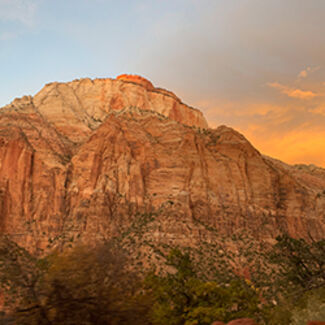
Arnold

5/1/2024
It is working great! It is a perfect fit to the trailer hub.
Put these caps in the CE Smith hub assembly in order to have easy access to the trailer spindle zirc fitting. Used a 2” pvc pipe to drive them on the hub. Looks good. James and Kate were excellent to work with at etrailer!!!
I wanted the caps with grease fitting in them


Katrina D.
4/12/2024
Awe man, I am sorry that these werent the caps you were wanting. I see that our customer service department has gotten a new order placed for you for bearing buddies. When you receive the new order, I would love to hear your updated feedback.
I called etrailer about a question on the size of the grease caps. They were very helpful and by knowing what bearings I used we determined the grease cap size. Shipping was fast too.

I use these caps on my boat trailer which is used only in salt water. Even with thorough rinsing after every use, the zinc plating on cap rusts out and the rubber plug cap gets dry rotted from sun exposure in less than a year. Still works OK if you smear a coat of grease all over the outside of the cap and the rubber plug.
The fit on my Dexter hub is perfect. These, along with etrailer bearing/seal kits are being replaced as general maintenance. Great product!
They can prove difficult to put in but it takes some time! I truly believed these were incorrect size but eventually got all 4 on and they are guaranteed a tight seal! Don’t give up if you are having trouble putting them on and don’t drill or cut them to get them to fit either! I saw that on you tube as a fix but it’s not necessary! Use a strong rubber mallet! That’s what did the trick for me!
A perfect replacement for the battered and worn caps on my EZ Lube axles. Order dust cap driver p/n 290-991 for easy installation and removal during service.
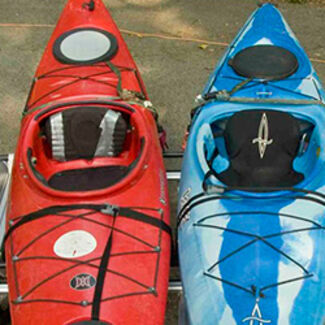
Wt H.

2/20/2015
Thanks for taking the time to follow up with me. Ive only put a few hundred miles of use on the trailer but everything is working great. Ive actually recommended etrailer to my father, a friend of mine and anyone at work who would listen made easier by the fact that I had everything I ordered shipped to my job instead of home. Barring an emergency situation that requires an immediate solution you have my business in the future.
Great replacement for original equipmen t.

perfect fit! good quality, no issues
They had the parts I needed and shipped fast too.

Shipping with etrailer was very fast. After having these grease caps for a year I can say that I am very happy with my purchase. Fitment was perfect and quality is good. Would purchase from etrailer again.
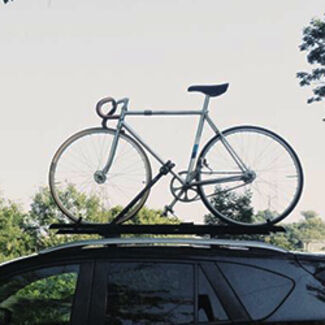
Steven

5/4/2023
Still good and hasn’t budged after 2 years.
Not quite the same as OEM. Metal is slightly thinner and had some trouble installing
Perfect plus it was delivered on time. Great service thank you.
It was time to repack the bearings on my 12 foot utility trailer and I needed a dust cap with simple / clean access to the grease fittings. The RG04-040 was the perfect solution, easy to install and looks great too!
Grease Cap fit perfect and the rubber plug fits nice and tight. No water or dirt is getting inside. I highly recommend you purchase the Dust Cap Driver Tool as I did. They fit tight and the tool puts equal pressure all the way around. Your going to flatten the edge out if you don't use this tool for sure. Do it right the first time.
The grease caps were exactly as described and fit properly. The shipping was very fast and e mails keep the buyer informed very well. I will certainly buy from etrailer.com again. Thank you
Good grease caps.
My current grease caps are a bit worn and one in particular doesn’t like to stay seated. Needing replacements and having great experiences with etrailer - I purchased these replacements. They do exactly what they are supposed to do and seem to be of better quality than some others I have seen.
Just what I needed
I'm a "Return" customer & have been completely happy with the products & service provided by etrailer. They have met & exceeding my expectations!
When I have trailer needs they are my go to resource moving forwards!
Keeping my trailer in Great Shape!
Fit like it was made for these hubs. Thank You
Fit and function worked as advertized
All items shipped on time. Thank You
See what our Experts say about this TruRyde Trailer Bearings Races Seals Caps
- My Axle Has No Cotter Pin Hole Can I Install Bearing Kit for #84 Spindle?The # BK2-100 Bearing Kit for #84 Spindle L44649/L68149 Bearings 10-19 Double Lip Seal will work. You have EZ Lube spindles which do not use a cotter pin. The spindle has a tube in it for the grease to be pumped in. Instead it uses a tang washer, which is the bendable tab on spacer you were referring to. Even the manufacturer said the # BK2-100 kit was designed for hubs that use the number 84 spindle. This Kit comes with both a cotter pin for standard spindles and a tang washer for EZ-Lube...
view full answer... - Comparing EZ-Lube Spindles to Bearing Buddy Grease CapsIt sounds like you have EZ-Lube spindles like # TRU74FR and special EZ-Lube grease caps like # RG04-040 on your boat trailer. Since you already have a handy method to top off your hubs' grease level there is really no need to move to Bearing Buddy grease caps. Both methods provide a good means to ensure the proper grease level but only one of the two is needed. If you really want to switch from EZ-Lube spindles to Bearing Buddy grease caps you could do this, strictly speaking, but you...
view full answer... - Galvanized Trailer Idler Hub With Bearings L44649, 2,200 lb Axles and 13 Inch to 15 Inch WheelsThe Trailer Idler Hub Assembly - Galvanized # 8-258-50UC1-EZ is correct if you have inner and outer bearings # L44649, the grease seal has a 1.50" inner diameter, and you have 13" to 15" wheels with a 5 on 4-1/2" bolt pattern. This is for E-Z lube axles so if you have standard axles you can use the Trailer Idler Hub Assembly - Galvanized # 8-258-50UC1 which is the same part except its grease cap does not have a plug like # RG04-040 for access to the E-Z Lube grease zerk. The hub assemblies...
view full answer... - Castle Nut Wont Thread All the Way on 2,000 lb EZ Lube Spindle with Tang and D WasherThank you for all the photos! My contact at Dexter Axle confirmed that on a 2,000 lb axle, the D-washer # 5-23 is not needed. It is only required on 3,500 lb axles and above. So, in your case it's perfectly safe to leave it off and this way allowing the castle nut # 165686 to fully thread on the spindle. When tightening the spindle nut it should be tightened to the point that you can feel resistance in the bearings, then backed off to the point where you can bend the tang properly which...
view full answer... - Timken Bearings, Races, Seals and Caps For a Lippert 3,500lb Trailer AxleFor each of your Lippert 3500lb axles you will need the following components. Timken Inner Bearing & Race # TMK73VR Qty 2 Timken Outer Bearing & Race # TMK23VR Qty 2 etrailer Grease Seal # 58846 Qty 2 Grease Caps # RG04-040 Qty 1 We do not carry a Timken grease seal or caps in the size you need for your Lippert axle.
view full answer... - EZ Lube Grease Cap Hitting Grease FittingI do have a solution that will work with your EZ Lube axles. It sounds like the grease fitting is too long and is hitting the rubber cap. Most grease caps are very similar in height, so changing the cap most likely won't solve the clearance issue. However changing out the grease zerk will give you more clearance, if you use a short one like # Gzerk. If the fitting was bent, or damaged and then replaced, it's very possible to have one that is just slightly too long. I verified with my...
view full answer... - Do you Carry TruRyde 1.986-Inch Outer Diameter EZ Lube Drive-In Grease CapsYes, the TruRyde 1.986-Inch Outer Diameter EZ Lube Drive-In Grease Caps (with plugs), part # RG04-040, are available from etrailer. These are sold as a set of two. We also offer driver tools to simplify installation, such as part # 290-992.
view full answer... - Bearing Buddy and Standard Grease Caps to Fit 1.98-Inch Hub BoreAll Bearing Buddy bearing protectors have the same depth, just different diameters. Also, some are threaded to fit threaded hubs while others are not. If your spindles have a grease zerk fitting on the end you will not need to use a Bearing Buddy; that grease zerk means you have EZ-Lube spindles which provide an alternate way to maintain your hubs grease level. For such spindles use part # RG04-040 If it is the actual castle nut that hits the inside surface of the Bearing Buddy then you...
view full answer... - Trailer Hub Grease Cap for Hub with 1.980 inch OpeningYou would want the EZ Lube Drive in Plug with Cap part # RG04-040. This has been confirmed as a fit for trailer hubs that have a hub bore of 1.980 inch.
view full answer... - Available Sizes of Hub Dust Cap Close to 2-Inch DiameterIn an E-Z Lube hub dustcap like # DC200L-DCRP the size nearest to your required 51.2 mm size (2.01-inch) is this item you referenced and also 2-piece kit # RG04-040. Since the caps can get bent/distorted from removal you'll want to measure the hub's inside bore rather than the outside diameter of the remaining cap to get the most accurate dimension. The same is true when measuring for grease seals; always measure the hub bore rather than the old part. In the next size up we have Bearing...
view full answer... - Replacement Dust Cap for Lippert 4,400 lb EZ Lube 176207 AxleI reached out to Lippert and my contact was able to confirm that the hub bore on you 176207 4,400 lb axle is 2" which means you can use the Replacement Dust Cap # DC200L-DCRP or get it in a 2-pack as part # RG04-040.
view full answer... - Finding A Grease Cap For a Hub/Drum Assembly With 2.033 Hub Bore MeasurementThe Bearing Buddy Bearing Protectors # BB2047SS fit a 2.047" hub bore and are the closest item we have to the 2.033 diameter you measured. You might consider changing out the Hub # AKHD-545-35-EZ-K to get all the parts to the correct size. Your 1 hub may have been replaced by a previous owner with a different part.
view full answer... - Comparing Buddy Bearings and EZ-Lube Grease CapsThe Bearing Buddy Bearing Protectors like part # BB1781 will only work for standard spindles, not those with grease fittings in the end which are also known as EZ-Lube. They both are designed to provide easy lubrication to the bearings without having to pull apart the hub. If you have EZ-Lube hubs you'll have to use grease caps, preferably ones that have an easy to remove center section like the Grease Caps part # RG04-040.
view full answer... - How to Determine Correct Replacement Dust Caps for 2012 Karavan SeaDoo Move TrailerI will be happy to help you out. There are a couple of ways you can determine which dust caps fit your Karavan-made trailer. First, you can measure the opening on the hub where the dust caps fit. The measurement has to be as accurate as possible so you will need to use dial or digital calipers. The other way is to retrieve the outer bearing number at least, if not both the inner and outer bearing numbers. The bearing numbers are stamped into the sides of the bearings. The outer one you...
view full answer... - How to Pick Out Replacement Grease Caps for EZ Lube Spindle Grease CapYou will want to use a dial caliper or micrometer to measure the inner diameter of the hub you have on your trailer to determine what size cap would be needed. Check out the picture I attached that shows this measurement being taken on a hub. I attached a link to all the grease caps we offer, once you know what size you need check out the link I attached to see all the sizes we offer that have the EZ lube style cap that allows for easy application of grease to EZ lube spindles.
view full answer... - Will Hubs that Have Bearing Numbers L44649 Fit on Trailer Axle # T20BTR-EZ-7258Your current hubs are correct for fitting the spindles of the trailer axle # T20BTR-EZ-7258 that you are interested in. The correct EZ lube dust cover would then be the # RG04-040 and you'd be set!
view full answer... - Looking for Grease Cap with Zerk Fitting with an Outer Diameter of 2.02 inchesIt sounds like you are looking for a bearing protector style of grease cap. We have a variety of bearing protectors in several different sizes but none with an outer diameter of 2.02 inches. The bearing protectors closest to your OD measurement of 2.02 inches is either going to be 1.98 inches or 2.047 inches. Bearing Buddy grease caps are made both with and without threads so you'll want to check your hub bore to see if it is threaded or not and while you're at it, confirm the number...
view full answer... - Replacement Rubber Plug for EZ-Lube Grease Cap on Tow DollyThe only rubber dust covers we offer for EZ Lube grease caps are # RG04-010, which are designed to fit a 1.18 inch diameter hole in the grease cap to allow access to the grease zerk without removing the cap. Your best bet would be to simply replace your existing grease caps. If the outer bearing is # L44643 or # L44649, use the # RG04-040 grease cap with removable plug. This is compatible with most 2000-3500 lb capacity hubs which is typical of what's found on most tow dollies. To be...
view full answer... - Replacement Grease Cap for an AL-KO 8490 With EZ Lube SpindlesFrom what I could find out about your AL-KO 8490 hubs, they us a Dexter #84 spindle. This is one of the most common 3,500 pound options out there, so I can confirm the TruRyde Grease Cap, 1.99" OD EZ Lube Drive in with Plug # RG04-040 will fit without issue. Depending on how your bearings and seals are looking, you may also consider looking at the Bearing Kit for #84 Spindle # BK2-100. This will replace both races, both bearings, and the seal.
view full answer... - How to Determine the Correct Size Grease Caps for a Southwest Kendall TrailerIn order to determine the correct size grease cap, the best thing to do would be to take apart one of the hubs and get the outer bearing and race numbers. You can also get the hub bore inner diameter using dial calipers for the most accurate measurement. I have included a video on removing a hub below. This will determine the correct size you need whether it is the DC200L-DCRP, # RG04-040, or another size. I have included a link to our grease cap main page below. I went out to the warehouse...
view full answer... - Do Tru Ryde Grease Caps come with Grease PlugsI went out to the warehouse and pulled the Tru Ryde Grease Cap # RG04-040 and yes they do come with the black plug. I have made a video which shows the grease caps with and without the plugs installed.
view full answer... - How to Determine the Correct Size Bearing Protectors for a 1985 Ranger Boat TrailerWith an EZ Lube type of axle, a bearing protector like a Bearing Buddy will not fit. You would need to use a drive-in type of grease cap with a plug in the end to access the zerk fitting on the axle. Take a look at # RG04-040 as an example. We have different size bearing protectors depending on the inside hub bore where they fit. You will need to measure the hub bore with some dial calipers to get the most accurate measurement possible to find the correct ones that fit. They will actually...
view full answer... - Replacement EZ-Lube Grease Cap and Rubber PlugIt sounds like you need an EZ-Lube type grease cap and rubber plug for your trailer hub. We have these EZ-Lube grease caps in several sizes to fit a range of hubs. All are shown on the linked page. All you need to do is measure your hub's inside bore diameter to choose the correct matching grease cap. Part # RG04-040 fits a hub bore of 1.99-inches. Part # RG04-080 fits a hub bore of 2.44-inches. Part # RG04-120 fits a hub bore of 2.72-inches. This is the size that fits the hub you...
view full answer... - Can Dexter 10 Hub and Rotor # K08-435-05 be Used on EZ Lube SpindlesThe Titan 10" Hub and Rotor # K08-435-05 that you referenced can be used with EZ lube spindles. In order to do that you'd need to use the correct grease caps and you'd be set. For that all you need is the part # RG04-040 which has the removable center sections to make it EZ lube spindle compatible.
view full answer...
Do you have a question about this Trailer Bearings Races Seals Cap?
Info for this part was:



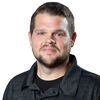







At etrailer.com we provide the best information available about the products we sell. We take the quality of our information seriously so that you can get the right part the first time. Let us know if anything is missing or if you have any questions.






























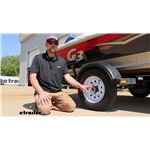
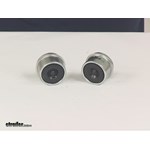






























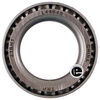


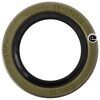

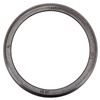




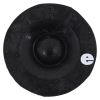








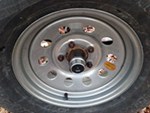

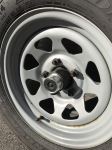
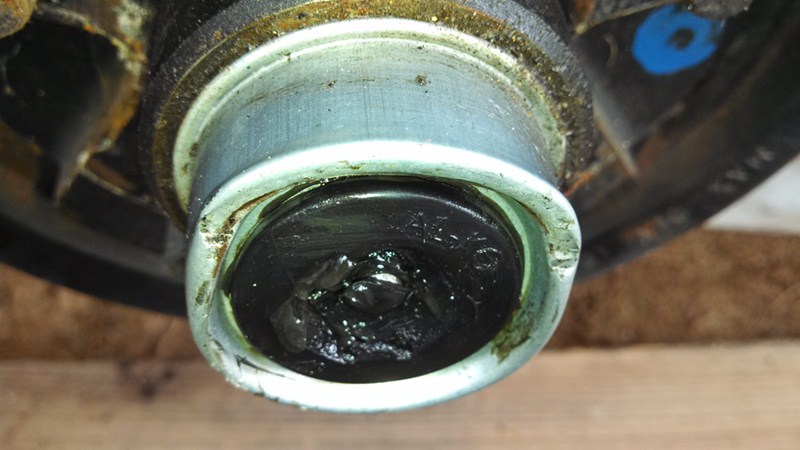



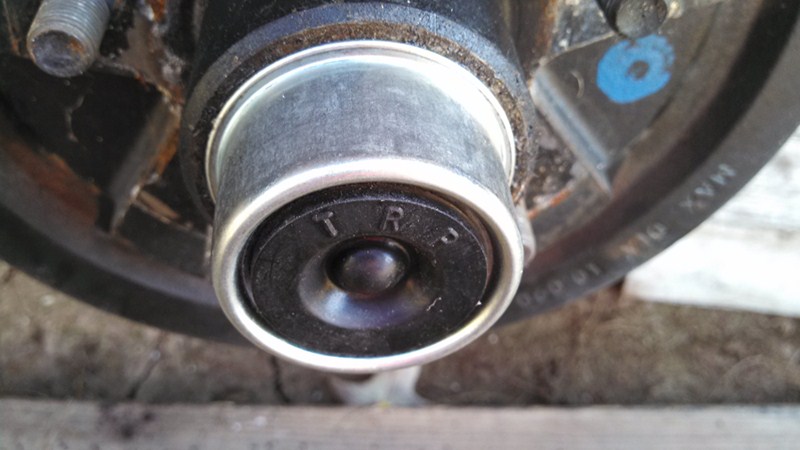




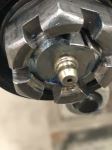
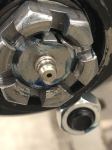
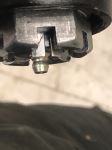
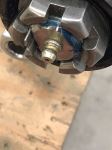


Harold M.
12/1/2023
Everything is perfect!